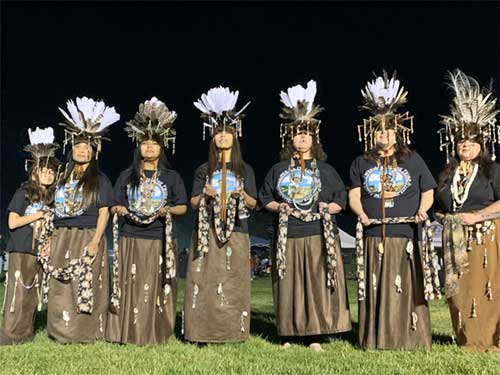Protecting Native American Lands – Why Federal Recognition of Tribes Is Vital
Protecting Native American Lands – Why Federal Recognition of Tribes Is Vital August 2023

A love for one’s historic homeland is a universal one. And when people have their land taken away and stolen from them, it is not just space, soil and the animals and plants that live on it that are lost – it is the history and heritage of those people, their home. Anyone who has ever had their home taken from them knows what it feels like, as in the recent case of Russia’s invasion of Urkraine and the theft of their homelands. As another example from the classics of American literature is Gone with the Wind and what Irish immigrant Gerald O’Hara who is the father of Scarlett O’Hara says in the movie is as true today as it was when the book was written – “The land is the only thing in the world worth working for, worth fighting for, worth dying for because it's the only thing that lasts."
Gone with the Wind
Native American tribes lived on and cared for the vast land that is North America for many millennia before the European invaders arrived. Within a century of the settlers’ arrival, native lands were stolen by various nefarious means and soon it was almost all “gone with the wind.” A few federally recognized tribes were issued, for the most part somewhat useless lands, called reservations on which they could live and practice their traditional ways of life, but these were, to be honest, little more than large ghettos created to salve the conscience of the invaders which made them feel they were being fair to the people whose lands that were being stolen, as in the case of certain California Indian tribes. The tribes that had not formally obtained or retained, federal recognition, as in the case of the Muwekma Ohlone Tribe fared even worse.
The California Story
California has the largest number of non-federally recognized tribes in the country. The reason for this is that politics and policy decisions were used to deny many tribes of their rights even though Congress acknowledged the theft of California Indian lands. When California entered the Union in 1850, between 1851 and 1852 eighteen treaties were negotiated between the United States and many California Indian tribes that guaranteed them reservation lands totalling 8.5 million acres along with other fundamental rights. However, the Senate refused to uphold these treaties and left the tribes without land, basic civil rights, and with no safe place to establish their settlements. A few tribes that were living in tiny settlements called rancherias did get some form of recognition, but that was only a drop in the bucket. That lasted about a century and then, in the 1950s, Congress terminated 109 tribes across the U.S., and this included 41 tribes in California. Today, there are over 500 federally recognized tribes in the country, but 55 tribes in California no longer have federal recognition – a number that makes up 20% of all non-recognized tribes nationwide.
The Pursuit of Happiness
Today, it can be argued that with an increasing number of Native Americans integrated into the American lifestyle and residing in urban areas, the need for federal recognition of tribes is no longer an issue. However, nothing could be further than the Truth. The Declaration of Independence states that every citizen of this country has an undeniable right to “life, liberty and the pursuit of happiness.” However, citizenship was not accorded Native Americans until 1924, after 17,000 Indians served during WWI overseas in Europe (1917-1919).
The history of Native Americans is tied to the land they live on and unless that land can be guaranteed to them through federal recognition, how can their futures be guaranteed and their cultures and traditions survive? How then can they exercise their right to the pursuit of life, liberty, and happiness?
Federal recognition will not just guarantee them the protection of their land, it will secure their right to maintain their traditions and cultural identity and remain who they are., especially after being on their lands for over 10,000 years.
An excellent example of the importance of this recognition is the case of the Muwekma Ohlone Tribe in the San Francisco Bay Area as a landless tribe. Check out the Tribe’s website to see how important Ohlone language and revitalization efforts and integrating Muwekma Ohlone Tribal events and celebrations into their present-day lifestyle is for them. It is something that applies to all the tribes.